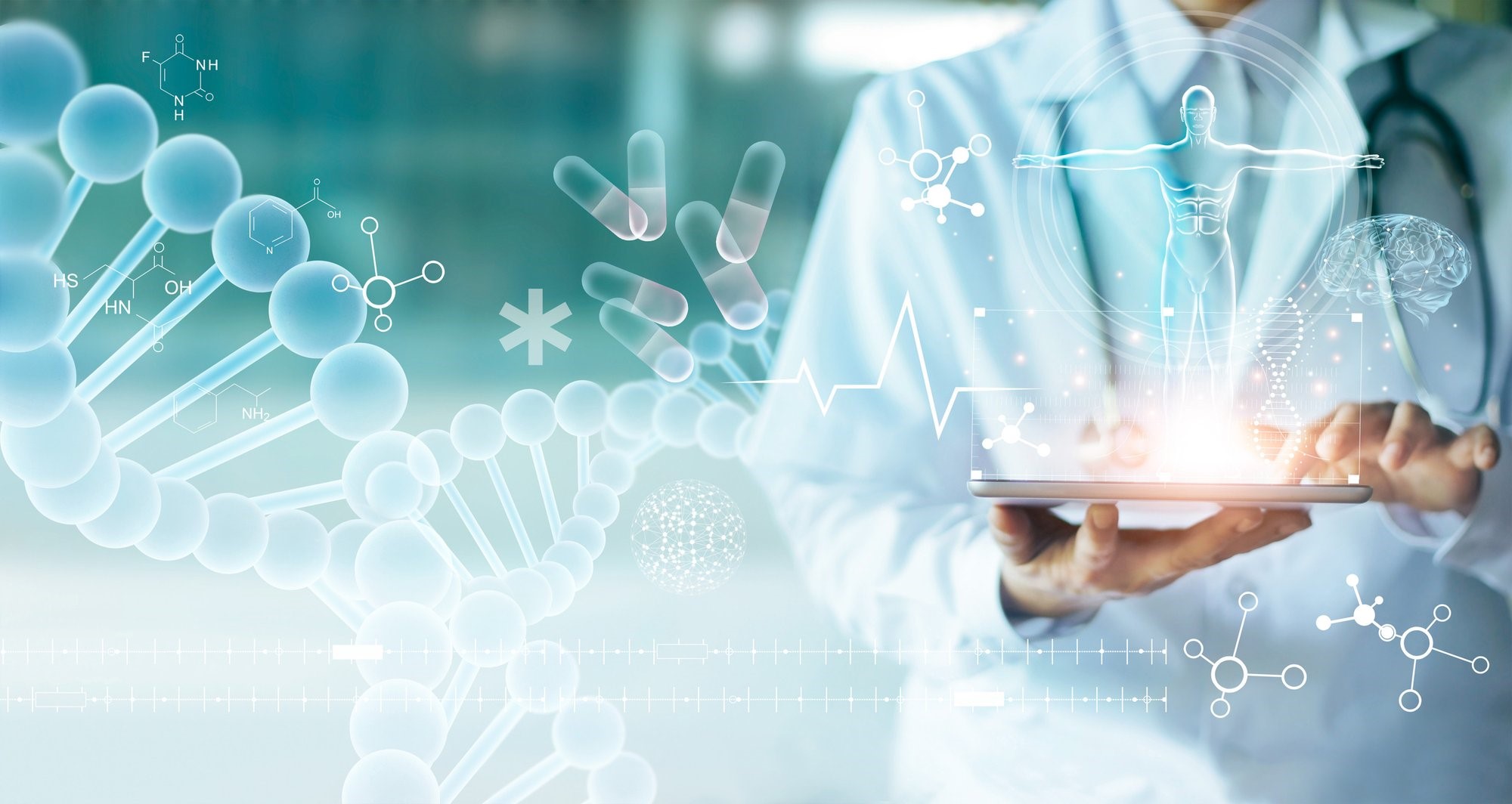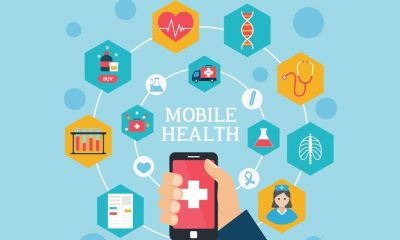Uncategorized
The Future of Gerontology: Research and Care Innovations

The Future of Gerontology: Research and Care Innovations
The field of gerontology, the study of aging and the challenges that come with it, has evolved significantly over the past few decades. As the global population ages, the demand for innovative solutions in geriatric care and research has never been more pressing. This article delves into the latest advancements in gerontology innovations, highlighting how these developments are shaping the future of aging and elder care.
The Aging Population: A Global Challenge
According to the World Health Organization (WHO), the number of people aged 60 years and older is expected to double by 2050, reaching approximately 2.1 billion. This demographic shift presents significant challenges, including increased healthcare costs, a higher prevalence of chronic diseases, and the need for more comprehensive care systems. Addressing these challenges requires a multi-faceted approach, combining cutting-edge research with practical care innovations.
Breakthroughs in Gerontology Research
1. Genetic and Molecular Research
One of the most promising areas of gerontology research is the study of the genetic and molecular mechanisms of aging. Scientists are uncovering the roles of specific genes and cellular processes in aging, which could lead to targeted therapies to delay or mitigate age-related decline. For instance, research on telomeres—the protective caps at the ends of chromosomes—has shown that their length can influence aging and longevity. By understanding how to maintain telomere integrity, scientists hope to develop treatments that can extend healthy lifespan.
2. Senolytics: Targeting Senescent Cells
Senescent cells, which are cells that have stopped dividing but do not die, contribute to aging and age-related diseases. Senolytics are a class of drugs designed to selectively eliminate these cells, thereby improving healthspan and potentially delaying the onset of age-related conditions. Early clinical trials of senolytic drugs have shown promise in improving physical function and reducing disease markers in older adults.
3. Artificial Intelligence and Big Data
Artificial intelligence (AI) and big data are revolutionizing gerontology research by enabling the analysis of vast amounts of health data to identify patterns and predict outcomes. AI algorithms can analyze medical records, genetic information, and lifestyle data to provide personalized insights into aging and disease prevention. This technology also aids in the early detection of diseases such as Alzheimer’s, allowing for timely interventions.

Picture by: Yandex.com
Innovations in Elder Care
1. Telemedicine and Remote Monitoring
Telemedicine has emerged as a vital tool in elder care, especially in the wake of the COVID-19 pandemic. It allows healthcare providers to remotely monitor and manage patients’ health, reducing the need for in-person visits. Remote monitoring devices, such as wearable sensors that track vital signs and activity levels, enable continuous health assessment and timely intervention. These technologies not only improve access to care but also enhance the quality of life for older adults.
2. Robotic Assistance
Robotic technology is making significant strides in assisting the elderly with daily activities. Robots designed for elder care can perform tasks such as medication reminders, mobility assistance, and even companionship. For example, robotic pets have been shown to reduce feelings of loneliness and improve mental well-being in older adults. These innovations are particularly beneficial for individuals with limited mobility or cognitive impairments.
3. Smart Home Technologies
Smart home technologies are transforming the living environments of older adults, making them safer and more comfortable. These technologies include automated lighting, temperature control, and security systems that can be controlled via smartphones or voice commands. Additionally, smart home devices can monitor for potential hazards, such as falls, and alert caregivers in real-time. This level of automation and monitoring helps older adults maintain their independence while ensuring their safety.
4. Personalized Nutrition and Exercise Programs
As we age, our nutritional and exercise needs change. Personalized nutrition and exercise programs, tailored to an individual’s health status and goals, are becoming increasingly important in promoting healthy aging. Advances in wearable technology and AI allow for the continuous monitoring of dietary intake and physical activity, providing real-time feedback and recommendations. These personalized programs can help manage chronic conditions, improve physical function, and enhance overall well-being.
The Role of Policy and Education
While technological and medical innovations are crucial, the future of gerontology also depends on supportive policies and education. Governments and institutions must invest in research, provide funding for innovative projects, and create policies that support the aging population. Additionally, educating healthcare professionals about the latest advancements in geriatric care ensures that they are equipped to implement these innovations effectively.
1. Training Healthcare Professionals
To fully leverage gerontology innovations, healthcare professionals must be adequately trained. This includes understanding the latest research findings, being proficient in using new technologies, and adopting a holistic approach to elder care. Continuing education programs and specialized training in geriatric care are essential for preparing healthcare workers to meet the needs of an aging population.
2. Public Awareness and Community Support
Raising public awareness about the importance of healthy aging and the available innovations is crucial. Community support programs can provide older adults with access to resources, information, and social connections, which are vital for their well-being. Public health campaigns and community-based initiatives can promote healthy lifestyles and preventive care, reducing the burden of age-related diseases.
Conclusion
The future of gerontology is bright, with numerous innovations poised to transform research and care for the aging population. From genetic and molecular research to AI-driven insights, and from telemedicine to smart home technologies, these advancements hold the promise of improving healthspan and quality of life for older adults.
However, realizing this potential requires a concerted effort from researchers, healthcare providers, policymakers, and the community. By embracing these innovations and fostering a supportive environment, we can ensure that the aging population not only lives longer but also enjoys a healthier, more fulfilling life.
Uncategorized
How to set up a Canon IJ Start printer to a computer?

Introduction
Setting up a Canon IJ Start printer such as a PIXMA or similar model—from unboxing to printing from your computer can be pretty straightforward if you follow step-by-step. This article walks you through the process, from initial hardware setup, to driver/software download via Canon’s official site (the “IJ Start” page), and then connecting via USB or Wi-Fi. We’ll also cover some best practices and troubleshooting tips so you can get your printer working smoothly.
Preliminary Steps: Unboxing & hardware preparation
Before you even touch your computer, it’s best to get the physical hardware ready. Doing this sets the stage for a smoother driver/installation experience.
1. Unpack and power the printer
- Remove the printer from the box, including all protective packaging, tape, and shipping materials.
- Connect the power cord to the printer and plug into a wall outlet (or surge protector). Power on the printer.
- Many Canon printers will automatically go into a setup or “first time” mode where you install cartridges and load paper.
2. Install ink cartridges and load paper
- Open the top or front cover (depending on model) and install the ink cartridges as directed by the printer manual.
- Close the cover.
- Locate the paper tray and load a stack of standard printer paper (e.g., A4/Letter) adjusting the sliders so the paper is held snugly.
- Ensure no blue protective tape remains in the print-head area or cartridge slot (some models ship with it).
3. Decide connection method: USB vs Wi-Fi
Before downloading software, decide how the printer will connect to your computer:
- USB (wired): Direct cable from your PC/Mac to printer. Simple and reliable.
- Wireless (Wi-Fi): Printer connects through your wireless network. Gives you more flexibility (e.g., print from multiple devices).
- You may still need to install drivers in either case, but the connection choice influences which software steps you follow.
Downloading and installing drivers & software
Once the hardware is ready, the next step is to install the appropriate software to allow your computer to communicate with the printer. Canon’s recommended starting point is the official setup page.
1. Access the official Canon setup site
- On your computer, open a web browser and go to https://ij.start.canon.
- On that page you’ll be asked to select your country/region and enter your printer model number (e.g., “PIXMA TS3320”).
- After selecting your model, you’ll see a list of drivers, software utilities, and manuals for your operating system (Windows, macOS, etc.).
Tip: Make sure you enter the correct model number exactly (including spaces or hyphens) so you download the right drivers. Also ensure the URL is correct there are fake sites pretending to be Canon. On the official Canon community forums, users warn:
“If you need to set up your Canon inkjet printer, make sure to go to https://ij.start.canon…”
2. Download the driver package and software utility
- From the driver & downloads page, select your operating system version (e.g., Windows 10, macOS Monterey).
- Download the “Full Driver & Software Package” if available—it often includes the printer driver, utilities like scanning software, and maybe wireless setup tools.
- Save the file to your computer (e.g., in your Downloads folder).
3. Run the installer and follow on-screen instructions
- Double-click the downloaded file to launch the installation.
- Accept the license agreement and follow the prompts. At some point you’ll be asked to choose a connection type (USB or wireless).
- If connecting by USB: connect the printer to PC when prompted by the installer.
- If wireless: you’ll either be asked to connect the printer to your Wi-Fi network (see next section) or the installer will do it for you.
- After installation finishes, you may be asked to print a test page to confirm setup.
Connecting Your Printer to the Computer
This section covers both USB and Wi-Fi connection methods so you can follow whichever applies to your situation.
1. USB connection (wired)
If you prefer the simple route:
- Make sure the printer is powered on and the driver software has been installed or is in the process of being installed.
- Connect one end of a USB cable to the printer and the other to an available USB port on your computer.
- Windows/macOS should detect the printer and finish installation.
- In Windows: go to Settings → Devices → Printers & Scanners, and you should see the new Canon printer listed. On macOS: Apple Menu → System Preferences → Printers & Scanners.
- Print a test page from a document to ensure everything works.
2. Wireless (Wi-Fi) connection
Wireless setup gives you more flexibility. Here are the typical steps:
- Ensure your printer is powered on and your Wi-Fi network (home router) is working.
- On the printer, press the Wi-Fi or Wireless Connect button (for many Canon models) until the Wi-Fi light starts blinking. This places the printer into “wireless setup” mode.
- On your computer, during the driver installation (or via the wireless setup utility), you’ll be prompted to select your Wi-Fi network (SSID) and enter your password (WPA2 or similar encryption).
- The printer connects to your Wi-Fi network. On the printer, the Wi-Fi indicator should stop blinking and become steady.
- Back on your computer, ensure the printer appears in Printers & Scanners and select it as the default if desired.
- Print a test page.
Note: Some Canon inkjet printers only support the 2.4 GHz Wi-Fi band (not 5 GHz). If you have dual-band router and the printer refuses to connect, switch the router to expose 2.4 GHz or temporarily disable the 5GHz band.
Final Setup Checks & Tips
Once the printer is connected and drivers installed, do the following to ensure everything is configured correctly and optimised for typical use.
1. Set the printer as default (optional)
- On Windows: go to Settings → Devices → Printers & Scanners, select your Canon printer and click “Set as default”.
- On macOS: System Preferences → Printers & Scanners, select the printer and under “Options & Supplies” you might designate if required.
2. Configure printing preferences
- Select paper size, print quality (e.g., standard vs high quality) via the printer properties window.
- For photo printing: use photo paper type and maybe select “High quality” or “Best photo” settings.
- For documents: standard settings are usually fine.
3. Install any additional utilities
- Canon often includes utilities like “Canon IJ Scan Utility” for scanning documents, and the “Canon PRINT” app for mobile devices. The app is available on iOS/Android.
- If you’ll be scanning frequently or want to print from your phone/tablet, ensure those apps are installed.
4. Perform a test print and/or scan
- Print a test document to verify connectivity and printing is working.
- If your model supports scanning, test a scan to your computer to confirm utility installation.
- Check that the output is correct (no blank lines, colours look right, margins correct).
Troubleshooting Common Issues
Even with careful setup, you might encounter some hiccups. Here are some common issues and fixes.
1. Printer not detected by computer
- Ensure power is on.
- Check USB cable is firmly connected (if wired).
- Make sure the computer is on the same Wi-Fi network as the printer (if wireless).
- Restart both the printer and computer, then re-run the driver install.
- On the official site, Canon emphasises using the correct URL and avoiding non-official sites.
2. Wireless connection fails
- Confirm your router supports the network band that the printer uses (most likely 2.4GHz).
- Ensure Wi-Fi password is entered correctly.
- Move the printer closer to the router during setup to avoid weak signal issues.
- Check that the printer’s Wi-Fi indicator stopped blinking (which shows connection complete).
- If retrying multiple times fails, temporarily disable firewall or antivirus on the computer (just for setup) because sometimes they block network printer detection.
3. Print quality or missing output problems
- Use genuine Canon ink cartridges if possible—they tend to yield better results.
- Run printhead cleaning from your printer software/utility to clear any clogged nozzles.
- Check paper type/size settings match what you loaded.
- Make sure the driver version is correct for your OS—using outdated or incorrect drivers can cause odd results.
- If you still have issues, revisit the driver download page at ij.start.canon to check for updates.
4. Security and scam caution
While setting up, be aware of scams. One user posted:
“A friend ended up at a site and … got a call from ‘Canon’ support … it turned out to be a scam.” Always ensure you’re on the right domain:
ij.start.canon (not .com or other variations). Do not allow remote-control software access unless you’re certain it’s a legitimate Canon support call.
Conclusion
Setting up your Canon IJ Start printer need not be complicated. By following the steps above—unboxing and prepping your hardware, downloading the right drivers from the official Canon page, choosing either USB or Wi-Fi connection, and then doing a few checks to confirm everything works—you’ll have your printer ready for documents, photos, scanning, and more.
Key things to remember:
- Use the correct setup URL: https://ij.start.canon.
- Select the correct model/operating system when downloading drivers.
- If wireless, connect the printer and computer to the same Wi-Fi network and use the 2.4GHz band if necessary.
- Run a test print/scan after setup.
- Keep your software and firmware updated for best performance.
If you hit a specific error or your model behaves differently than what is described above, feel free to ask for help—include your precise printer model number (for example, “PIXMA TS3320”) and which operating system you’re using (Windows 11, macOS Ventura, etc.).
Happy printing!
Uncategorized
Expert Home Renovation Services in Amsterdam and Netherlands

Introduction
A home isn’t just a place to live, it’s a reflection of who you are. Over time, styles evolve, lifestyles change, and spaces need to adapt. That’s where home renovation comes in. For residents of Amsterdam and across the Netherlands, All Round Interieur has become a trusted name in crafting modern, functional, and elegant living spaces. With years of experience in construction services, interior renovation, and remodeling, the company continues to redefine how homes are transformed.
About All Round Interieur
Based in Amsterdam, All Round Interieur is a leading name in home renovation and construction services. The company brings together a team of skilled designers, builders, and craftsmen who are passionate about enhancing homes from the ground up. Whether you’re upgrading a single room or transforming your entire property, their approach ensures that every project receives careful attention to detail, creative design insight, and quality workmanship.
What sets All Round Interieur apart is its ability to manage every aspect of a project from concept and design to execution and finishing. Homeowners across the Netherlands trust them for reliable interior renovation, premium finishes, and end-to-end project management that delivers results on time and within budget.
Comprehensive Home Renovation Solutions
When it comes to home renovation, the team at All Round Interieur doesn’t believe in one-size-fits-all solutions. Every home has its own story, and every client has a unique vision. The company provides a full range of construction services and interior renovation options tailored to fit each project’s needs and style.
Here’s what they specialize in:
1. Complete Home Renovation
From structural upgrades to aesthetic transformations, All Round Interieur offers complete home renovation services designed to breathe new life into aging properties. Their process begins with a detailed consultation, followed by customized design concepts and seamless project execution.
2. Interior Renovation and Design
Whether it’s updating flooring, redesigning layouts, or adding modern finishes, interior renovation is at the heart of what they do. Their designers work closely with clients to create interiors that balance beauty, comfort, and practicality. With expertise in color schemes, materials, and lighting, they craft spaces that feel both modern and timeless.
3. Kitchen and Bathroom Remodeling
Kitchens and bathrooms are two of the most important areas in any home. All Round Interieur provides complete remodeling services that blend functionality with style. From smart storage solutions to premium fittings and finishes, their remodeling contractors ensure that every detail enhances both comfort and value.
4. Flooring and Underfloor Heating
A home renovation isn’t complete without the right flooring. The company offers a variety of flooring options from natural wood to contemporary tiles along with professional installation. For homeowners seeking extra comfort, they also specialize in energy-efficient underfloor heating systems ideal for the Dutch climate.
5. Construction and Structural Services
As part of their wider construction services, All Round Interieur handles structural improvements, extensions, and outdoor renovations. Their skilled builders ensure all work meets safety standards while maintaining the architectural integrity of each property.
Why Choose All Round Interieur?
In the competitive home renovation market of Amsterdam and the Netherlands, choosing the right company makes all the difference. All Round Interieur has earned a reputation for excellence thanks to its client-focused philosophy, expert craftsmanship, and commitment to quality.
Here’s why homeowners continue to trust them:
- Proven Expertise: Years of experience in home renovation, construction services, and interior renovation ensure that every project is handled with professionalism and precision.
- Comprehensive Service Range: From planning to final touches, All Round Interieur offers complete solutions under one roof. Clients don’t need to coordinate multiple contractors; everything is managed seamlessly.
- Transparent Communication: The team maintains open communication throughout the process. Clients are kept informed of progress, timelines, and design updates at every stage.
- Quality Craftsmanship: Every project, no matter the size, receives the same attention to detail. Materials are sourced from trusted suppliers, ensuring long-lasting quality and visual appeal.
- On-Time, Within Budget: Meeting deadlines and staying within agreed budgets are priorities. The company’s streamlined project management ensures efficiency without compromising on results.
With these strengths, All Round Interieur continues to be one of the most recommended remodeling contractors and home renovation specialists in Amsterdam and beyond.
Building Better Homes Across the Netherlands
All Round Interieur isn’t just about building walls and interiors, it’s about creating spaces that people love living in. From traditional Dutch homes to modern apartments, their home renovation services adapt to diverse architectural styles across the Netherlands. The team blends creativity and functionality, ensuring that every space serves its purpose beautifully.
Their projects often start with a vision, perhaps a client wanting a more open layout, better natural light, or a refreshed design. Through thoughtful planning, design expertise, and reliable execution, All Round Interieur turns these ideas into reality. Their dedication to quality has earned them repeat clients and word-of-mouth recommendations throughout Amsterdam and nearby regions.
Your Home, Reimagined
If you’ve been thinking about giving your space a fresh start, now is the time to act. Whether it’s a small update or a complete home renovation, All Round Interieur provides the expertise, creativity, and craftsmanship you need. Their integrated construction services, interior renovation, and remodeling contractors work together to ensure your home looks and feels exactly how you envision it.
From first consultation to final inspection, the experience is smooth, transparent, and rewarding. Every design is made to match your style, every finish, chosen for durability and elegance.
Conclusion
For homeowners in Amsterdam and across the Netherlands, All Round Interieur represents the ideal partner for turning renovation dreams into reality. Their experience in home renovation, construction services, and interior renovation ensures results that stand the test of time.
Whether you’re planning a modern upgrade, a full-scale remodel, or a functional redesign, their team of remodeling contractors is ready to help you transform your home into a space that inspires every day.
Transform your home with the trusted experts at All Round Interieur where craftsmanship meets creativity and your vision becomes a reality.
Home Garden
LED Lights Illuminate Your Space with Energy Efficiency

Introduction
In today’s world, energy efficiency and sustainability are more important than ever. As we strive to reduce our carbon footprint and save on electricity bills, LED lights have emerged as a popular choice for both residential and commercial lighting. Offering a host of benefits, LED lighting solutions, including LED strip lights, are transforming the way we illuminate our spaces. In this article, we’ll explore the advantages of LED lights, their applications, and how they can enhance your home’s ambiance.
What Are LED Lights?
LED stands for Light Emitting Diode, a technology that produces light when an electric current passes through a semiconductor material. Unlike traditional incandescent and fluorescent bulbs, which rely on heating a filament or gas to produce light, LED lights convert a higher percentage of energy into light, making them far more energy-efficient.
LED lights are available in various shapes, sizes, and colors, making them suitable for a wide range of applications. From ceiling lights and bulbs to LED strip lights for accent lighting, these versatile fixtures can fit seamlessly into any decor.
LED lights have revolutionised the way we illuminate our homes and workplaces. Known for their energy efficiency, long lifespan, and bright performance, LEDs consume significantly less electricity compared to traditional incandescent or fluorescent bulbs. They are available in various colour temperatures from warm white for cosy ambiences to cool white for task lighting making them versatile for any room or purpose.
Benefits of LED Lights
- Energy Efficiency: One of the most significant advantages of LED lights is their energy efficiency. They use up to 80% less energy than traditional incandescent bulbs and about 50% less than fluorescent lights. This efficiency translates to lower electricity bills, making LED lighting a smart financial choice for homeowners and businesses alike.
- Longevity: LED lights have an exceptionally long lifespan, lasting up to 25,000 hours or more compared to just 1,000 hours for incandescent bulbs. This longevity means fewer replacements and lower maintenance costs over time, making them a cost-effective investment.
- Durability: LED lights are constructed from solid materials, making them more durable and resistant to damage than traditional glass bulbs. They are less likely to break, making them ideal for high-traffic areas or outdoor use.
- Reduced Heat Emission: Unlike incandescent bulbs, which release a significant amount of heat, LED lights emit very little heat. This characteristic makes them safer to use and more suitable for enclosed fixtures. Additionally, reduced heat output can lower air conditioning costs in warmer climates.
- Environmental Impact: LED lights are more environmentally friendly than traditional lighting options. They contain no harmful materials, such as mercury, and are fully recyclable. By switching to LED lighting, you contribute to reducing your overall carbon footprint.
Beyond functionality, modern LED lights come in stylish designs such as ceiling panels, downlights, and strip lights, adding both practicality and aesthetic appeal. With minimal heat emission and eco-friendly technology, LED lighting is the smart choice for anyone looking to save energy, reduce maintenance costs, and enhance interior design.
Applications of LED Lights
LED lights are incredibly versatile and can be used in various applications:
- General Lighting: LED bulbs are perfect for general lighting in homes, offices, and commercial spaces. Available in different wattages and color temperatures, they can replace traditional bulbs in lamps, ceiling fixtures, and recessed lighting.
- Accent Lighting: LED strip lights are a popular choice for accent lighting. These flexible light strips can be installed under cabinets, along shelves, or around furniture to create a warm and inviting ambiance. With various colors and brightness levels available, LED strip lights allow you to customize your space according to your mood and style.
- Task Lighting: For areas that require focused illumination, such as kitchens or home offices, LED lights provide bright, energy-efficient task lighting. They can be used in desk lamps, pendant lights, or as under-cabinet lighting to enhance visibility while performing specific tasks.
- Outdoor Lighting: LED lights are ideal for outdoor applications due to their durability and energy efficiency. They can be used for landscape lighting, pathway illumination, and security lighting, providing safety and enhancing the aesthetics of your outdoor space.
- Decorative Lighting: LED lights are increasingly used for decorative purposes in events and celebrations. From fairy lights to LED sculptures, they add a festive touch and create an enchanting atmosphere for any occasion.
Conclusion: Upgrade to LED Lighting Today
Incorporating LED lights into your home or business is a smart investment that offers significant energy savings, longevity, and environmental benefits. With a wide variety of options available, including versatile LED strip lights, you can create a beautiful and functional lighting design that meets your needs.
As the world moves towards more sustainable living, LED lighting stands out as a solution that combines efficiency, durability, and style. Whether you’re looking to replace outdated bulbs or enhance the ambiance of your space, now is the perfect time to make the switch to LED lights. Illuminate your life with energy-efficient lighting and enjoy the benefits for years to come.
Read More: Clean Living Starts Here
-
Business2 years ago
Cybersecurity Consulting Company SequelNet Provides Critical IT Support Services to Medical Billing Firm, Medical Optimum
-
Business2 years ago
Team Communication Software Transforms Operations at Finance Innovate
-
Business2 years ago
Project Management Tool Transforms Long Island Business
-
Business2 years ago
How Alleviate Poverty Utilized IPPBX’s All-in-One Solution to Transform Lives in New York City
-
health2 years ago
Breast Cancer: The Imperative Role of Mammograms in Screening and Early Detection
-
Sports2 years ago
Unstoppable Collaboration: D.C.’s Citi Open and Silicon Valley Classic Unite to Propel Women’s Tennis to New Heights
-
Art /Entertainment3 years ago
Embracing Renewal: Sizdabedar Celebrations Unite Iranians in New York’s Eisenhower Park
-
Finance3 years ago
The Benefits of Starting a Side Hustle for Financial Freedom










































